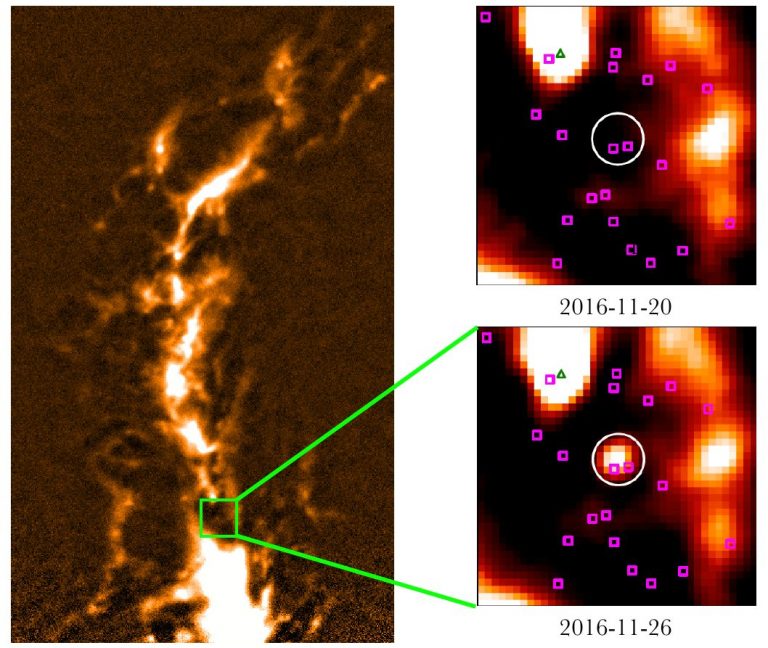JCMT: Transient Survey Observes Record-Breaking Flare
Posted: Wed Feb 13, 2019 4:36 pm
JCMT Transient Survey Team Observes Record-Breaking Flare
James Clerk Maxwell Telescope (JCMT) | 2019 Feb 11
A Stellar Flare 10 Billion Times More Powerful than Those on the Sun
Maunakea Observatories | 2019 Feb 11
The JCMT Transient Survey: An Extraordinary Submillimeter
Flare in the T Tauri Binary System JW 566 ~ Steve Mairs et al
James Clerk Maxwell Telescope (JCMT) | 2019 Feb 11
On November 26th, 2016, the JCMT Transient Survey Team observed what is estimated to be the most luminous known flare associated with a young stellar object. It is also the first coronal flare discovered at submillimetre wavelengths. The brief flash of light occurred in the direction of a binary system of forming stars known as “JW 566” in the Orion Nebula and it carried ten billion times the amount of energy of the solar flares observed around the Sun.
The flare was discovered by JCMT support astronomer Dr. Steve Mairs using advanced image analysis techniques that had been developed by the Transient Survey team over the past 2 years. The SCUBA-2 observations lasted approximately 30 minutes over which time the flare faded to half of the brightness measured at the beginning of the scan, indicating the event was short-lived. The flare is thought to be caused by an intense magnetic field re-connection event that energised charged particles to emit gyrosynchrotron/synchrotron radiation.
A Stellar Flare 10 Billion Times More Powerful than Those on the Sun
Maunakea Observatories | 2019 Feb 11
The JCMT Transient Survey: An Extraordinary Submillimeter
Flare in the T Tauri Binary System JW 566 ~ Steve Mairs et al
- Astrophysical Journal 871(1):72 (2019 Jan 20) DOI: 10.3847/1538-4357/aaf3b1
arXiv.org > astro-ph > arXiv:1812.00016 > 30 Nov 2018
